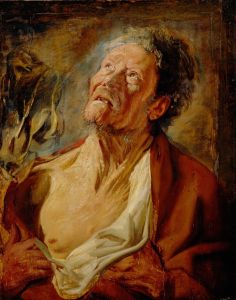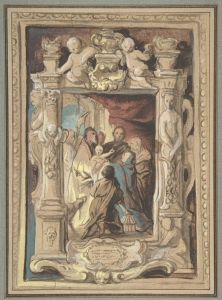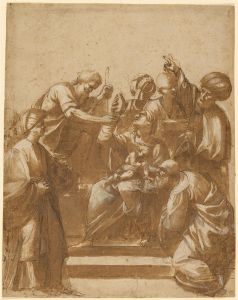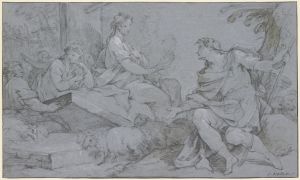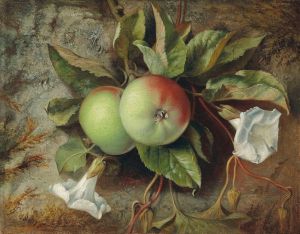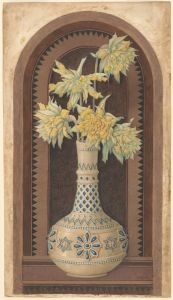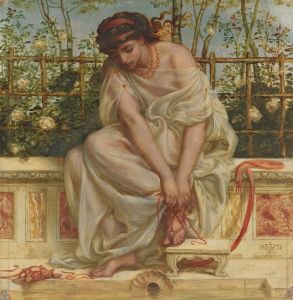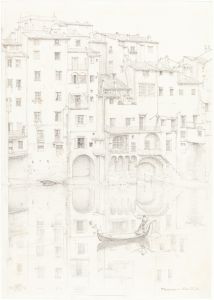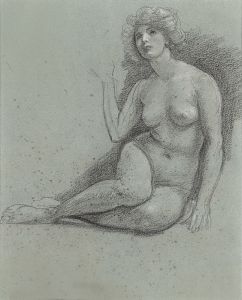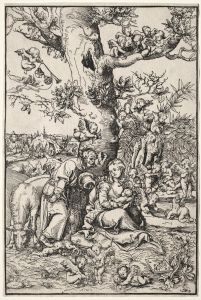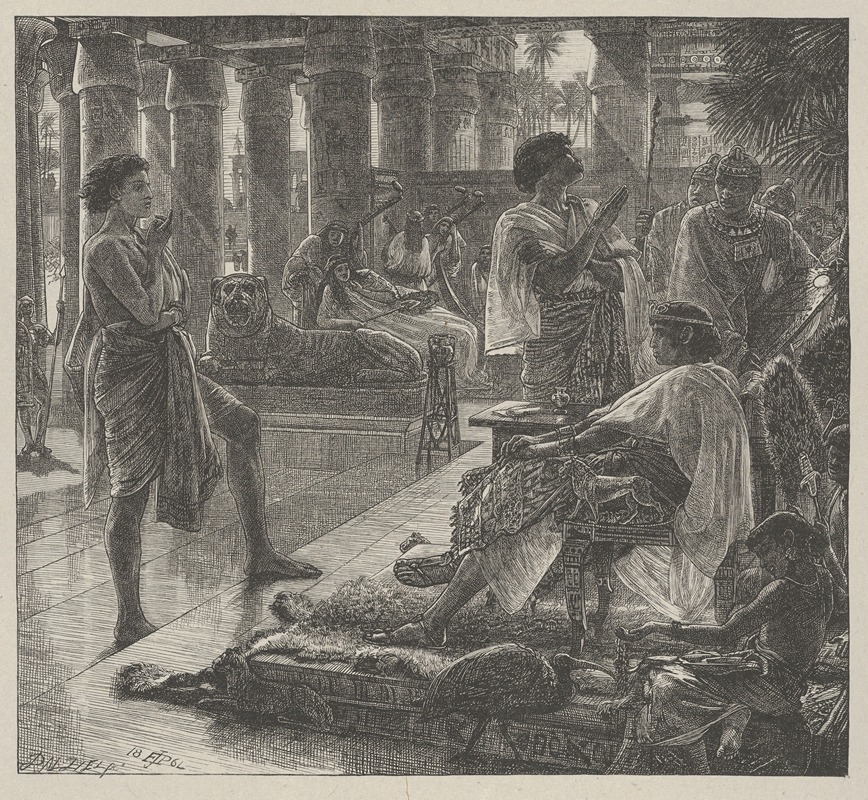
Joseph Before Pharoah
A hand-painted replica of Edward John Poynter’s masterpiece Joseph Before Pharoah, meticulously crafted by professional artists to capture the true essence of the original. Each piece is created with museum-quality canvas and rare mineral pigments, carefully painted by experienced artists with delicate brushstrokes and rich, layered colors to perfectly recreate the texture of the original artwork. Unlike machine-printed reproductions, this hand-painted version brings the painting to life, infused with the artist’s emotions and skill in every stroke. Whether for personal collection or home decoration, it instantly elevates the artistic atmosphere of any space.
"Joseph Before Pharaoh" is a painting by the British artist Edward John Poynter, completed in 1890. Poynter was a prominent figure in the Victorian art scene, known for his historical and classical subjects. This particular work depicts a scene from the biblical story of Joseph, as recounted in the Book of Genesis.
The painting illustrates the moment when Joseph, who had been sold into slavery by his brothers and later imprisoned in Egypt, is brought before Pharaoh to interpret his dreams. According to the biblical narrative, Pharaoh had been troubled by dreams that none of his advisors could explain. Joseph, known for his ability to interpret dreams, was summoned from prison to provide an explanation. He interpreted Pharaoh's dreams as a prophecy of seven years of abundance in Egypt, followed by seven years of famine. Impressed by Joseph's wisdom, Pharaoh appointed him as his chief advisor, placing him in charge of preparing for the impending famine.
Poynter's painting captures this pivotal moment with great attention to detail and historical accuracy, reflecting the artist's academic background and his interest in ancient cultures. The composition is characterized by its rich color palette and intricate depiction of Egyptian architecture and attire, showcasing Poynter's skill in rendering textures and patterns. The figures in the painting are arranged in a manner that emphasizes the drama of the scene, with Joseph standing confidently before Pharaoh, who is seated on a throne surrounded by his courtiers.
The artwork is notable for its use of light and shadow, which adds depth and dimension to the scene. Poynter's meticulous approach to historical detail is evident in the depiction of the Egyptian setting, from the hieroglyphics on the walls to the ornate costumes worn by the figures. This attention to detail reflects the Victorian fascination with ancient Egypt, which was fueled by archaeological discoveries during the 19th century.
"Joseph Before Pharaoh" is housed in the Art Gallery of New South Wales in Sydney, Australia. It is part of the gallery's collection of 19th-century European paintings and is considered one of Poynter's significant works. The painting exemplifies the academic style of the period, characterized by its emphasis on historical and mythological subjects, precise draftsmanship, and polished finish.
Edward John Poynter's contribution to the art world extends beyond his paintings; he was also an influential teacher and administrator. He served as the director of the National Gallery in London and was the president of the Royal Academy of Arts. His work, including "Joseph Before Pharaoh," reflects his commitment to the ideals of academic art and his dedication to preserving and promoting classical traditions in painting.
Overall, "Joseph Before Pharaoh" is a testament to Poynter's artistic skill and his ability to bring historical and biblical narratives to life through his art. The painting remains an important example of Victorian academic art and continues to be appreciated for its historical significance and artistic merit.






